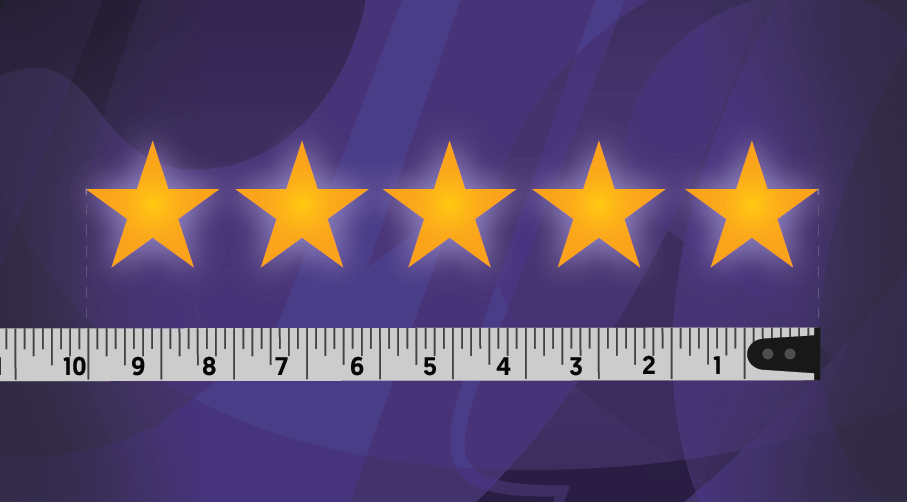
Measuring Customer Satisfaction is Mission-Critical to Success
Product differentiation, alone, has become obsolete. Your competitors can copy your better, faster, cheaper features practically instantly. But they can’t replicate the trust that customers feel for you and your team. That’s born of a contact center culture whose beating heart is a story that casts your customers as the world-changing hero. But if you’re not measuring customer satisfaction, you’re failing to fully realize the world-changing powers your heroes have.
Your customers influence your reputation whether they’re satisfied or not. Measuring customer satisfaction gives you the indicators you need to realign your contact center team and culture to provide the very best service with every interaction. Not to mention, your customers’ happiness has a direct influence on your bottom line, which will make your VP of Ops and COO take notice of your impressive contact center management skills.
According to Customer Contact Week’s market study, The Future of the Contact Center in 2019, nearly three-quarters of organizations think CSAT should be on the quality scorecard to measure customer satisfaction. Your CSAT score is the average satisfaction score customers give to a specific experience they had with your company. It’s measured by sending out customer surveys after an interaction. This way you have a consistent reference point through your customers’ journeys, and you can optimize your CX.
Here are three reasons measuring customer satisfaction is so important.
You get feedback straight from your customers.
With only 1 in 25 customers opting to reach out with negative feedback before dropping your company like a hot potato, soliciting feedback is your best defense against lost customers.
When you ask customers questions about their interactions, you can ID specific pains in their experience. You get direct feedback to use when you coach your agents, so they can fix customer pain points.
You can scour review sites for customer feedback, sure, but nothing beats commentary that’s intended for you rather than used as a tool to sway other customers. Review sites are often filled with experiences at opposite ends of the spectrum. You’re hearing from your incredibly happy and your overwhelmingly angry customers. But customer surveys served up at the end of customer interactions give you middle-of-the-road feedback, too. Plus, it’s a proactive way to get into the minds of your customers. Instead of waiting for customers to reach out with feedback, you’re asking for input on how you can either improve or repeat your top-notch experience.
The more sentiment you collect, the more you will know about all of your customers.
Data helps close the gap between companies’ perceptions and customers’ reality.
A slim 8 percent of customers feel like they’re receiving a great customer service experience, but 80 percent of organizations think they’re nailing it. There’s a divide between how companies and customers perceive customer satisfaction.
But the reality is, a majority of customers haven’t been happy for nearly 24 years. And the proof is the last two-plus-decades of CSAT scores marking customer satisfaction at a C+.
Those CSAT scores give the customer service industry data to close the gap. It’s time to stop focusing on perceptions and what we think we’re doing for our customers. And instead, we need to start listening to them. A C+ score doesn’t mean customers are happy.
Without the right measurements, you don’t know where your company falls on the spectrum of satisfaction. Then, your company contributes to the disconnect. The 8-to-80 percent comparison is too huge to be chalked up to a group of angry customers tanking scores.
Check in with your customers and ask questions to measure their satisfaction. You’ll have consistent data to back changes in your contact center and improve your customer service experience. Without hard numbers and direct feedback, your idea of customer satisfaction is nothing more than speculation.
CSAT scores show you how you stack up to the competition.
If you’re failing your customers on the CX front, they won’t hesitate to look for friendly service elsewhere. Dozens of customer service statistics prove it. Measure your customers’ satisfaction, so you know where you stand with your customers. Paying special mind to customer happiness gives you a leg up on the competition and makes for a better reputation.
Organizations like the Temkin Group and J.D. Power show off companies with the happiest customers. Keep tabs on your service experience, so you won’t be passed over when it comes time to recognize companies who deliver stellar service.
Chart-topping moments aren’t the only experiences measured on these annual lists. These organizations also dish on the companies whose experience needs some serious work. With these coveted rankings, you don’t want your company name making an appearance on the “worst in service” list.
Talk about bad publicity. Yikes.
Make sure your agents deliver an experience that satisfies your customers every. single. time. And if they’re not, use the information you gather to coach agents to do better next time around. Your reputation team will thank you.
Measuring customer satisfaction has serious bottom-line impact for your company. Keeping a pulse on how your customers feel about their experiences ensures that you’re optimizing the CX to make for happier customers. After all, you can’t improve what you don’t measure.

